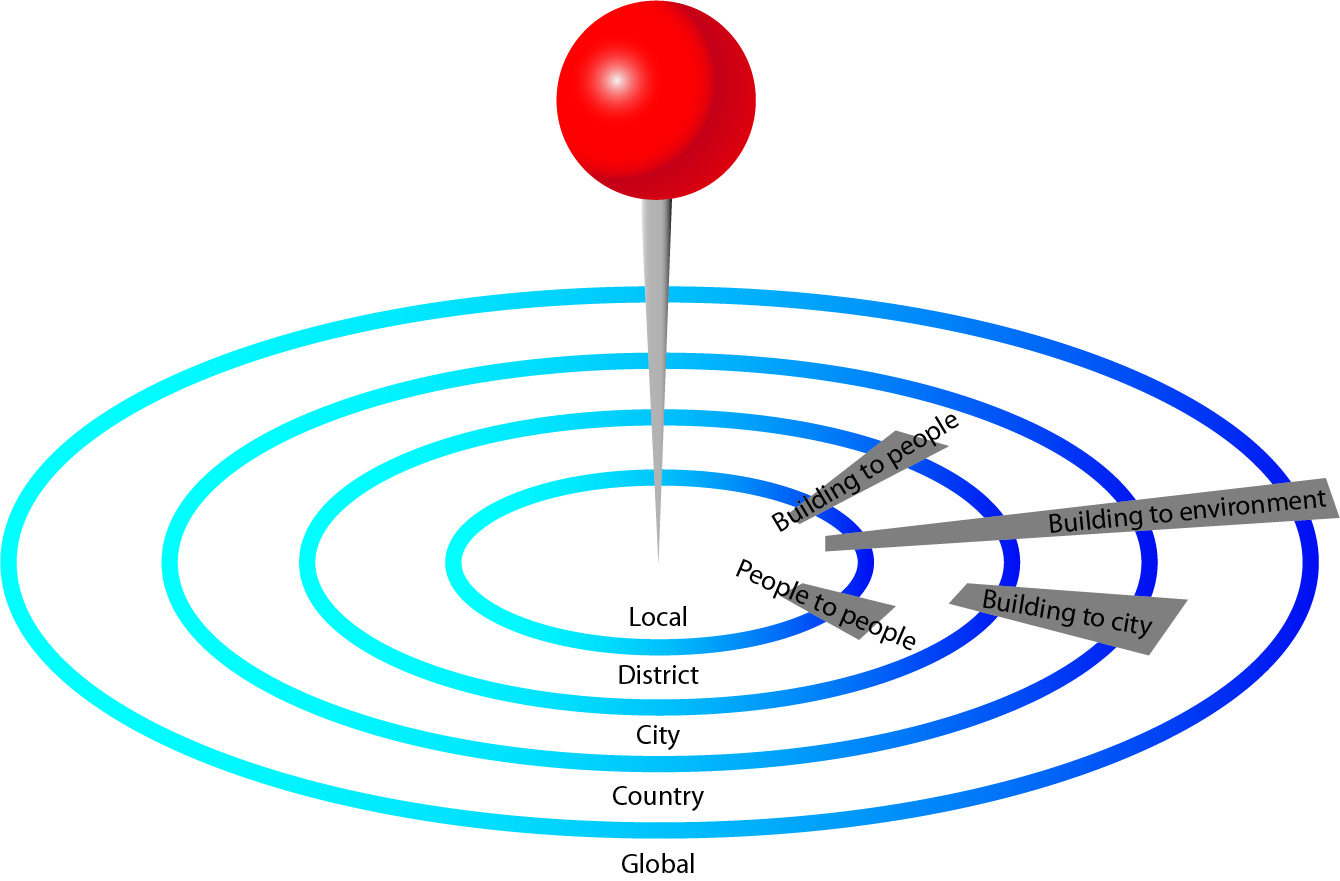project15:Interactions
Brainstorm
The idea behind interaction is a complex one. Is any system of bi-directional relationships a form of interaction, or are there restrictions to this definition. To come to a better understanding of this concept it is split up according to actors, and scale thus creating a diagram of the forces of interaction taking place on te location. This helps gain an understanding of the scales of interaction in which the design is situated.
The brain Network
The brain network is a simple solution to the complex problem of arranging a connection to land (and other entities) from your own or clusters entity. What we propose is a network of individual "synapses" (small, smart, floating blocks which can form bridges) which form connections between the different "neurons" (entities) whose behaviour is governed by a simple (so far) 5 ruled protocol:
- Every entity is connected within "the brain".
- Everything is connected only to its nearest neighbours, no links will go over, under, around or through neighbouring entities.
- No connections are permanent, unless specified otherwise (think of the link to for example land, or heavily clustered entities)
- The system learns from itself by observing traffic patterns across it, thus creating favored routes. These routes are however never permanent and the system will always try new permutations (think of an electrical impulse traveling through the brain, not always taking the same route thus sometimes discovering new shorter/better ways to get from A to B)
- The connection is three dimensional (XYZ Axis) thus it does not impose a design direction on the individual entities.
As you can see the network is simply a logistical system which can also be an attractive feature of the area since it is something new and improves routing and circulation across the harbor, it is not meant as a system which imposes a certain aesthetic on the entities connected to it. It doesn't force a fixed or moving position on the entities as it will simply create new routes when elements are moving in- or taken out of the harbour. Thus it is a simple top-down plan which gives space for your individual bottom-up approach.
